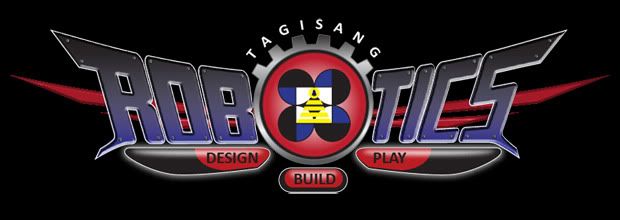WE ARE THE MUNSCI JAILBREAKERS ROBOTICS CLUB. Founded since 2011. We are from Muntinlupa Science High School, a know school to all. The club has __ members, excluding alumni. We compete every year in the contests. We join the Philippine Robotics Olympiad, Tagisang Robotics and FIRST Lego League. We have two coaches: Sir Rico Bantiles and Sir Emmanuel Estrellado (currently in Japan for his scholarship program). Each individual in our team is intellectually advanced, brave, enthusiastic, highly motivated and values-oriented students. Our goal is to stretch our intellectual abilities; show our talent to the community; learn new life-situated problems; help each other learn from mistakes. We move as a big team and we're determined to win the Tagisang Robotics this November. GO MJRC!



Muntinlupa Science HS
The school by the bayThings to Do to Check if your Arduino and Zigbee are working (repost from TR FB na repost from Thinklab)
Posted by
MunSci Jailbreakers
Thursday, October 13, 2011
Repost of the repost from the TR FB Fan Page
Good day everyone, para sa mga nagtatanong, here is a summary of the things that you have to do and check.. :)
1. Ensure that your Arduino board is working. Working means you can upload a sketch.
a. Your computer must be able to detect the device. This requires installation of the PL2303 driver that was given to you.
b. If the computer can now detect the device, you will next need to select the proper COM PORT and BOARD. The Com port can be checked via the device manager, or by disconnecting and connecting the device while checking which port number disappears and appears. The board type on the other hand is 'Arduino Diecimila, Duemilanover or Nano w/ Atmega 168'. (please check if your board is a 168. ang alam ko kasi, 168 ang provided sa inyo.)
c. Try uploading even a simple blink code. Meron nun sa examples. Or you can just type it.. Recall lectures provided by Thinklab Secretariat.
d. If you were able to do all this successfully, then, yehey! your Arduino board is working. Now, let's go to Zigbee..
2. To make the debugging task easier, isolate the testing of your components. So, zigbee muna.. Even with just the Zigbee connected, the sketches provided to you will work.
a. Download the receiver and sender sketches. You may have the zigbee attached or not when downloading. kung attached yung zigbee, make sure that the slider of the zigbee is set to USB Mode. The slider is the small silver thing located at the end of the board with labels ZIGBEE (or XBEE) and USB. This switch is important because this is how we tell our Arduino board who is using the Serial line. In USB mode, the line is used by the Arduino-PC Communication. In Zigbee mode, the line is used by the Arduino-Zigbee Communication.
b. If you were able to successfully upload the sketches, the next thing to do is to configure. Before the game, you will be assigned a PAN ID. So it is important that you can do the configuration successfully. Sa configuration mode, you have to do and check the following. (yung zigbee, naka-attach na sa board)
i. slider is set to zigbee mode. (the small silver thing. this is how we tell the board to give the line to zigbee. and because of this, you should not open the Serial monitor)
ii. MODE jumper is removed. This is the small black thing located near the two LEDS. may label po to na MODE.
iii. pin 12 is connected to ground. This pin is important because this is how we tell the Arduino to jump to the configuration part of the code, or to jump to the operations mode. In the configuration mode, again, we CONNECT this pin to GROUND.
iv. connect the RTS and CTS to pins 2 and 3 (sender) and 4 and 5 (receiver). Malalaman po ninyo kung tapos na ang configuration kung mamatay na yung LED na connected sa pin 13. Kung ok na ang configuration, you can now go to the operations mode.
c. Assuming na natapos na ang configuration, your zigbees should now be ready to communicate. Do the following:
i. slider is set to zigbee
ii. Return the MODE jumper
iii. CONNECT pin12 to 5V or to 3.3V whichever is available. This time, we are telling our microcontroller to jump to the operations part of the code.
iv. connect the RTS and CTS to pins 2 and 3 (sender) and 4 and 5 (receiver).
to check kung nakakapag-usap na ng maayos yung mga modules, the green LED of the ZIGBEE should turn off (yun yung malaki na may katabing blinking na orange). to know if the receiver is receiving data from the sender (e.g. joystick is moved), the on-board led of the arduino should blink.
3. Motor check
You can do an isolated testing of the motor driver if you do not have any device to test it (e.g. oscilloscope). You will just need to modify the code a bit. DO THIS without the zigbee connected.
a. Assuming that everything is properly connected (please check your wirings), save first a copy of the receiverCode and name it as motorTest.
b. Comment out everything inside the loop function. Copy the following before the end of the setup function and upload.
setLow();
motCont('r',1,125);
motCont('l',1,125);
prev_val = 1;
The one provided above is a very simple way to make the motor run, without changing much in the sketch provided. you can have your own and better way of testing it. :)
Kung connected ng maayos yung Motors, drivers, supplies at board, you should see your motor running.
4. If all your devices are working properly, from Arduino, to Zigbee, to Motors and drivers, yehey! pwede na ninyong simulang pagkabit-kabitin lahat. Actually, pwede naman talagang sa umpisa palang, ikabit na ninyo lahat. Ang advantage lang of doing it one at a time is mas madali na magdebug. Tsaka medyo sayang yung pagod kung everything is connected already, tapos may sira pala sa devices, you'll have to dismantle it again. Kung pagkatapos ikabit lahat at may problema pa rin, maaaring may hindi gaanong maayos sa connections ninyo, so check the wirings.. :)












Post a Comment